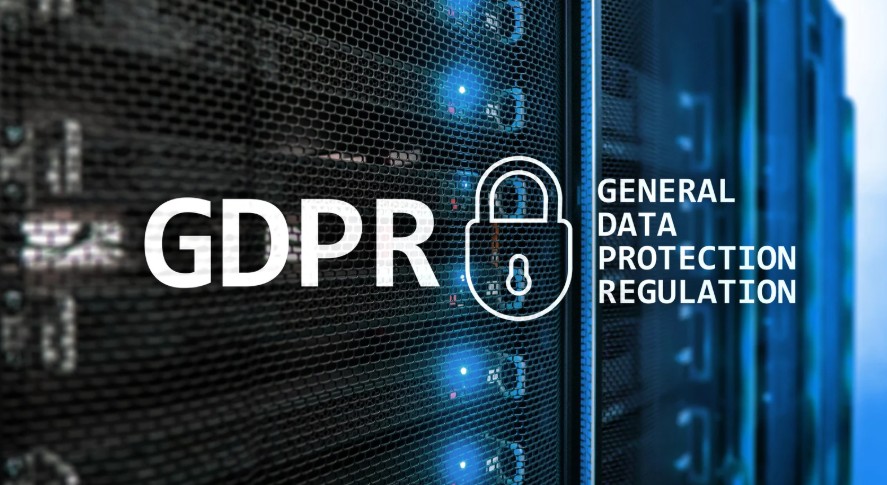
Email Delivery Service Providers and Their Role in GDPR Compliance
Email remains a key communication tool for businesses today, whether you are sending marketing newsletters or order confirmations. However, along with the benefits of email come important responsibilities, especially when it comes to protecting people’s personal information.
The European Union’s General Data Protection Regulation (GDPR) sets strict rules for how organizations must manage the personal data of residents in the EU. This includes how businesses handle email addresses and related information of their subscribers and customers.
So, how do email delivery service providers fit into this picture? What part do they play in making sure businesses follow GDPR rules?
Basically, these providers are important partners. They offer the systems and features businesses need to run email programs in a way that respects privacy.
Following GDPR requirements can be tricky, but with a reliable email delivery service, like EmailLabs.io, companies can make it much easier to stay compliant, manage data properly, and keep their messages reaching the right people.
Understanding GDPR and Its Importance for Email Delivery

The General Data Protection Regulation (GDPR) is a set of rules from the European Union that gives people more control over their personal information. It’s a key law for anyone handling personal data in or with residents of the EU.
No matter where your business is based, if you communicate with people in the EU-through email marketing, for example-you have to follow GDPR rules.
Email is directly covered by GDPR because email addresses are considered personal data. Things like open rates and link clicks are also personal data, so every step involving this information must follow GDPR requirements.
Ignoring these rules can bring serious problems-legal, financial, and reputational.
Main GDPR Principles That Affect Emailing
There are several main ideas in GDPR that impact how you should handle emails:
- Lawfulness, fairness, and transparency: Be open about why you’re collecting email addresses and what you’ll do with them. Don’t trick people.
- Purpose limitation: Only collect and use data for clear, stated reasons. For example, don’t sign someone up for marketing emails just because they made a purchase, unless they agreed to it.
- Data minimization: Ask only for the data you actually need-usually just a name and email address.
- Accuracy: Keep your data updated and correct. Remove or fix old or incorrect email addresses quickly.
- Storage limitation: Don’t store data longer than you need it. Delete addresses you no longer need.
- Integrity and confidentiality (security): Keep personal data safe from leaks and unauthorized access using strong security methods.
- Accountability: Keep records and prove you’re following the rules. Document things like consent and data handling processes.
How GDPR Changes Email Practices for Organizations?
Businesses that email people in the EU must get clear, specific consent for marketing emails-no more pre-checked boxes or silent consent. Each person must actively agree to marketing messages.
Companies must also respect people’s rights to see, correct, or delete their data and to easily unsubscribe. Good email providers help make this easy and prompt.
To protect this information, businesses need security controls and training for their team. They should have simple explanations in their privacy policies about how they use personal data, including emails, and about people’s rights.
Companies should regularly check how long they keep data and delete anything they no longer need. Breaking these rules can result in fines and a damaged reputation.
What Are Email Delivery Service Providers?
Email delivery service providers (often called Email Service Providers or ESPs) are companies that help other businesses send emails.
While you could send emails from your own servers, using an ESP offers many advantages-better deliverability, tracking, and management, especially with large volumes. These companies send emails for you and help make sure they reach inboxes, not spam folders.
They usually offer tools for managing lists, building email designs, sending mass emails, tracking what happens after sending (like open and click rates), and handling responses such as unsubscribes or bounces.
Good providers spend a lot on the infrastructure to ensure messages are delivered as intended.
Different Types of Email Service Providers
There are ESPs for different needs. Some focus on smaller businesses with basic sending needs, while others offer features such as automation, analytics, or advanced designs for larger companies.
Some specialize in “transactional” emails (like order receipts), while others focus on marketing emails. Choosing the right kind depends on your company’s needs and how you plan to email your customers or subscribers.
Regardless, the way they handle personal data makes GDPR compliance a must.
Transactional vs. Marketing Email Providers
Some ESPs handle both kinds of email, but there are key differences:
| Transactional Emails | Marketing Emails |
| Sent one at a time, usually as a direct result of user actions-like order confirmations or password resets. These are expected and needed for service. | Sent to groups to promote products, offers, or newsletters. Requires clear consent under GDPR. |
| Often must be delivered instantly and reliably. | Can be sent in larger batches, often scheduled. |
Some providers focus on instant, reliable delivery for transactional messages while others offer more tools for marketing. The legal basis under GDPR may also differ for each email type.
The Role of Email Delivery Service Providers in GDPR Compliance

Email service providers play an important support role in helping your business follow GDPR. They are called “data processors,” handling your clients’ personal data, while your business is usually the “data controller.”
Both the business and the provider have responsibilities to keep data safe and processes compliant.
Good ESPs offer tools and features to help protect data, show consent, and respond to requests from people about their data. They are not just sending emails-they are a key part of protecting privacy.
Data Controller vs. Data Processor Roles
- Data Controller: Decides what data to collect and why (usually your company).
- Data Processor: Processes the data as instructed by the controller (the ESP).
Controllers must make sure their processors (the ESPs) follow GDPR too. A signed Data Processing Agreement (DPA) between the business and the provider explains these roles and responsibilities. A good ESP will have a solid DPA you can review.
Important GDPR Rules for Email Providers
- Article 28: Sets rules on contracts between controllers and processors.
- Article 32: Requires security steps like encryption and regular checks.
- Article 33 & 34: Require prompt notification if there’s a data breach.
- Article 30: Both controllers and processors must keep records of what data they process.
How Providers Support Consent and Data Rights?
While your company is responsible for collecting consent, most ESPs offer features like opt-in forms and double opt-in confirmation, which helps you prove proper consent was collected.
The ESP usually includes easy “unsubscribe” links and quickly processes these requests, removing people from your lists. Some even support handling access or deletion requests.
Security Steps Email Providers Should Take
Security is a big part of GDPR. ESPs need to use safe methods like data encryption, secure server connections, and strict access controls.
Many get certified (for example, ISO 27001) and run regular security checks. Their staff should get regular training to spot threats, like phishing, reducing the risk of a security problem with your email lists.
How to Pick a GDPR-Compliant Email Delivery Service Provider?
Choosing an ESP after GDPR is about more than just the features or price. Your company’s compliance depends a lot on your provider’s standards. Don’t just take their word for it-ask for proof of GDPR compliance, such as their DPA, security certifications, or data management policies.
Key Features to Look For
- Clear consent tools (opt-in forms, double opt-in options)
- Visible and fast unsubscribe process
- Proper security measures (encryption, access control, etc.)
- Up-to-date certifications (e.g., ISO 27001)
- Transparent data policies and easy-to-understand DPAs
- Clear information about where data is stored (EU or outside)
- A dedicated privacy officer or compliance team
- Help with access, correction, or deletion requests
- Tools for minimizing data collection and limiting its use
- Proof that consent records are kept and accessible
Questions to Ask Potential Providers
- How do you handle unsubscribes, and how fast are they processed?
- What methods do you use to keep data secure (like encryption)?
- Can we review your Data Processing Agreement?
- How do you help with data access or deletion requests?
- What is your policy for how long you keep email data?
- How do you report and handle data breaches?
- Where are your servers located?
- What tools do you offer for collecting and saving proof of consent?
The answers to these questions help you see if a provider takes GDPR seriously.
Dangers of Using a Non-Compliant Email Service Provider

Picking an ESP that doesn’t follow GDPR is risky. If they mishandle data, your business might face the consequences-even though the provider was responsible for directly causing the issue.
Fines and Legal Problems
Violating GDPR can bring huge fines. There are two levels: up to 10 million euros or 2% of worldwide turnover for less serious issues, and up to 20 million euros or 4% of turnover for more serious breaches.
Lawsuits are also possible if people’s data rights are ignored, leading to big legal expenses, compensation, and disruption to your work.
Risks to Your Sender Reputation and Inbox Rate
If you or your provider don’t follow GDPR, it can ruin your sender reputation. Internet Service Providers will block or filter your emails if they look like spam-for example, if you email people without their clear consent or make unsubscribing hard. This means fewer people see your messages.
On the other hand, sticking to GDPR not only keeps you legal-it builds trust, lowers spam complaints, and helps your emails get through.
What Happens if There’s a Data Breach?
If a provider is careless with data and there’s a breach, you may need to tell data authorities quickly-usually within 72 hours-and inform everyone affected.
This can be hard if your provider isn’t cooperative or equipped to handle such events. Working with a provider that is prepared reduces this risk and helps you meet your legal responsibilities.
Best Practices for GDPR-Compliant Emailing
Following GDPR isn’t just about avoiding trouble-it’s about earning trust and building stronger relationships with your audience. Good habits make email safer and more effective.
How to Obtain Proper Consent?
- Always ask people clearly if they want to receive marketing emails-no tricks or hidden options.
- Use double opt-in where people must confirm their subscription via email. This reduces fake sign-ups and creates a record of consent.
- Be honest about what types of emails people will get and link to your privacy policy.
Data Minimization and Purpose Limitation
- Collect just what you need-like a name and email address, not lots of extra details.
- Don’t use data for fresh marketing unless you get new permission. If someone gives you their email to complete an order, don’t start sending them newsletters unless they agree.
- Regularly clean your list and remove data that’s no longer required.
Make Unsubscribing Easy
- Put an unsubscribe link in every marketing email. It should be easy to find and simple to use-ideally just one click.
- Remove unsubscribed emails from your list right away to prevent mistakes.
Managing Requests From Data Subjects
- Have a clear way for people to ask for access to their data, make corrections, or ask to be removed (right to be forgotten).
- Train staff to handle these requests quickly and effectively.
- Keep simple records to show what requests you get and how you handle them.
Frequently Asked Questions About Email Service Providers and GDPR
Many companies have similar questions when dealing with GDPR and email marketing. Here are some answers to the most common ones:
Can I Use Purchased Email Lists Under GDPR?
No, generally you cannot. GDPR requires direct, informed consent. When you buy a list, you usually have no proof of how the emails were collected or if the people on the list agreed to receive messages from you.
Using purchased lists without proper consent is likely against GDPR rules and can lead to penalties and a poor sender reputation.
Is Consent Needed for Transactional Emails?
No, usually not. Transactional emails-like order confirmations or password resets-are sent because the person did something (like made a purchase).
These are covered under “contract” or “legitimate interest” legal grounds, so you don’t need extra marketing consent for these types of emails. But make sure not to add marketing content unless you have permission for that.
Can I Email Existing Customers Without Explicit Consent?
Sometimes you can under the “soft opt-in” rule. If someone bought something from you, you can send details about similar products or services, as long as you told them at the time, allow easy opt-out in every email, and don’t stretch this rule too far. Rules can be stricter in some countries, so explicit consent for marketing is generally safest.
Always include a simple unsubscribe option, and respect opt-out choices right away. The customer’s right to stop marketing is always more important than your interests.
Author Profile

- Blogger by Passion | Contributor to many Business and Marketing Blogs in the United Kingdom | Fascinated with SEO and digital marketing and latest tech innovations |
Latest entries
 Online BusinessNovember 19, 2025Does Automated Data Drive Growth?
Online BusinessNovember 19, 2025Does Automated Data Drive Growth? TechnologyNovember 18, 2025How AI Social Media Tools Use Mobile Proxies to Avoid Detection?
TechnologyNovember 18, 2025How AI Social Media Tools Use Mobile Proxies to Avoid Detection? TechnologySeptember 5, 2025How Beginners Can Choose a Safe and Trusted Platform for Playing Online Games?
TechnologySeptember 5, 2025How Beginners Can Choose a Safe and Trusted Platform for Playing Online Games? Online BusinessAugust 29, 2025Why SaaS Needs Proactive Risk Management?
Online BusinessAugust 29, 2025Why SaaS Needs Proactive Risk Management?

